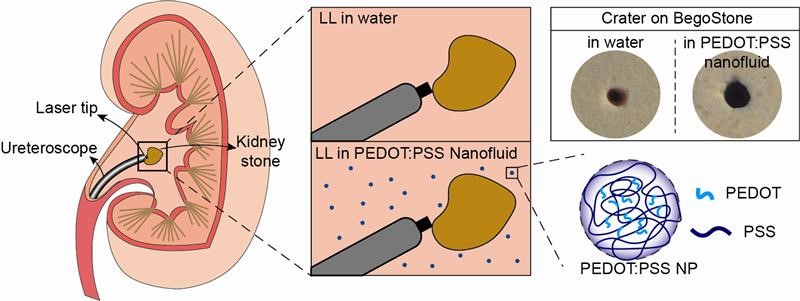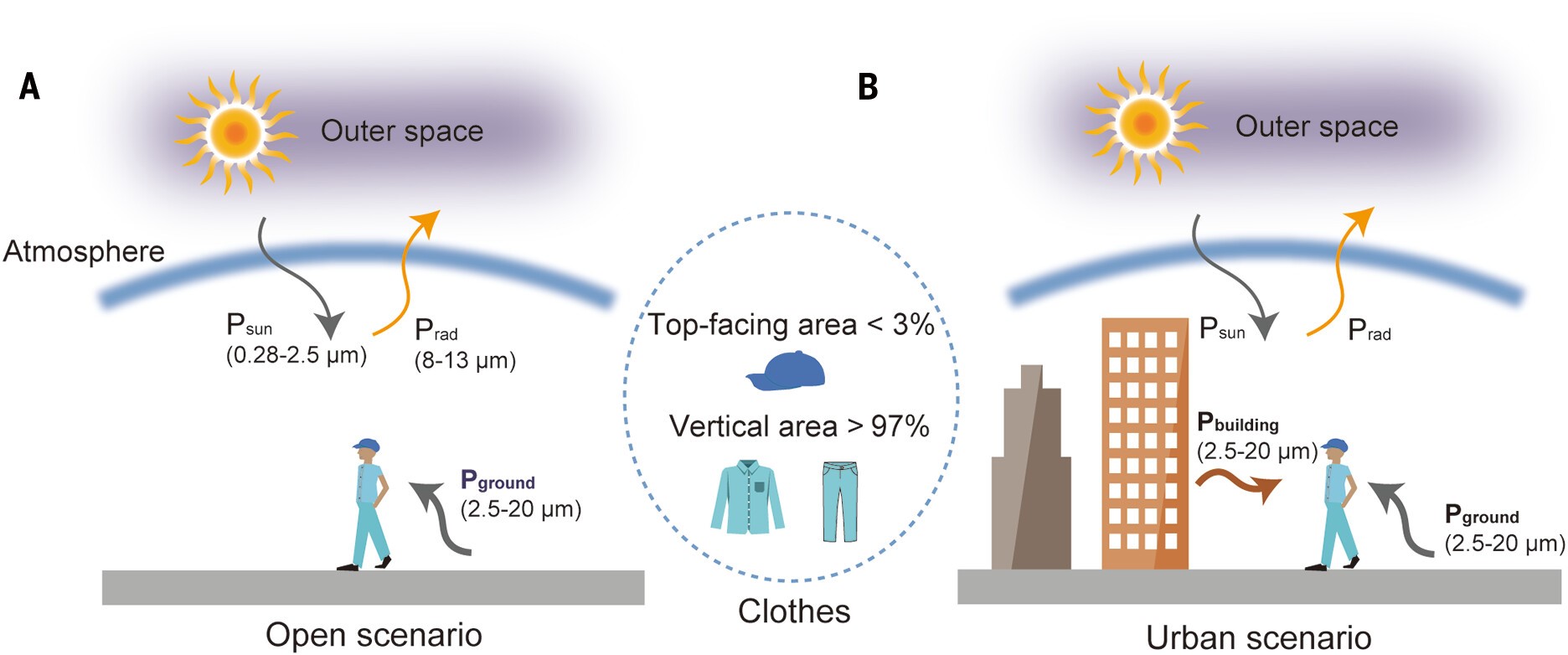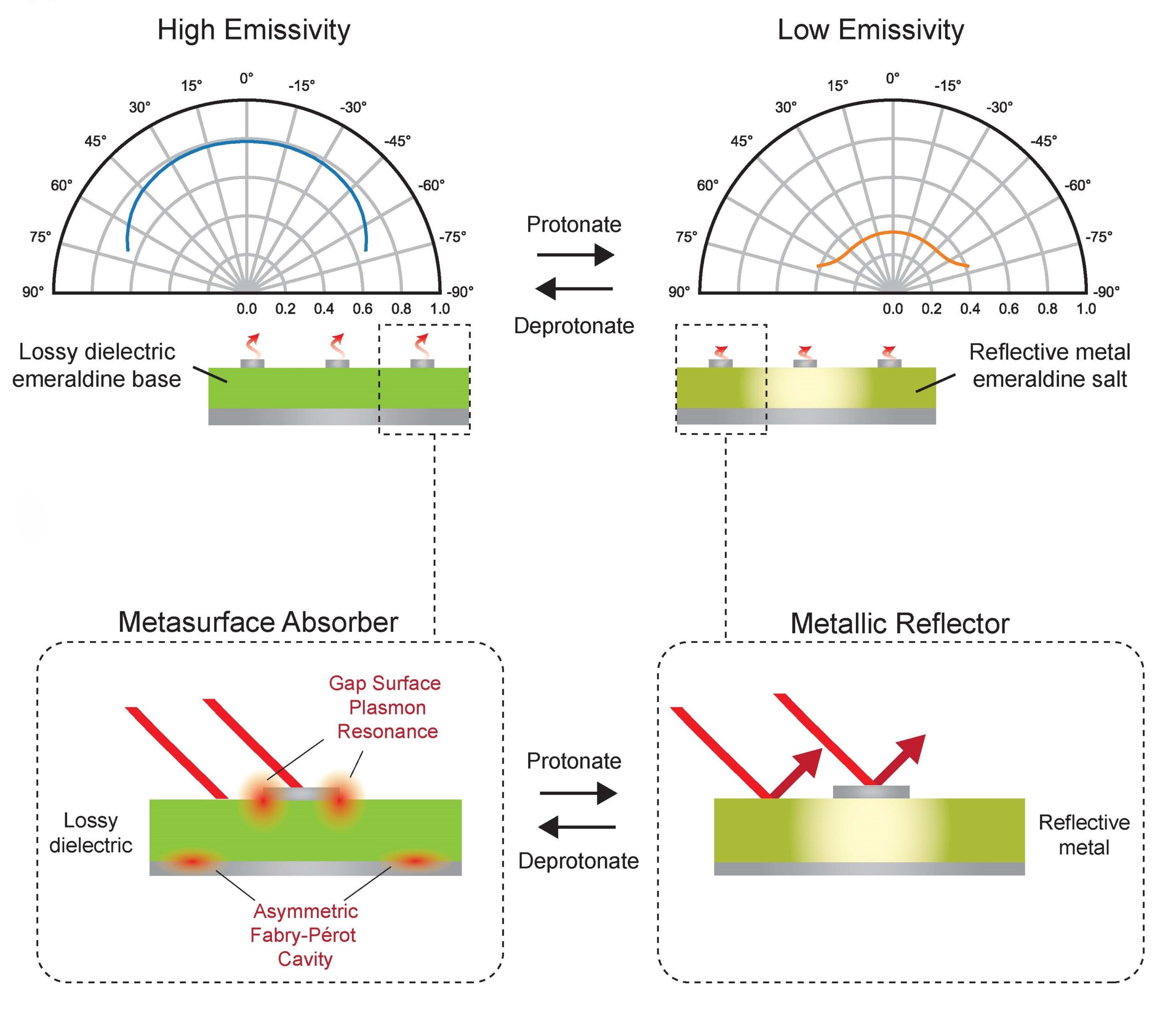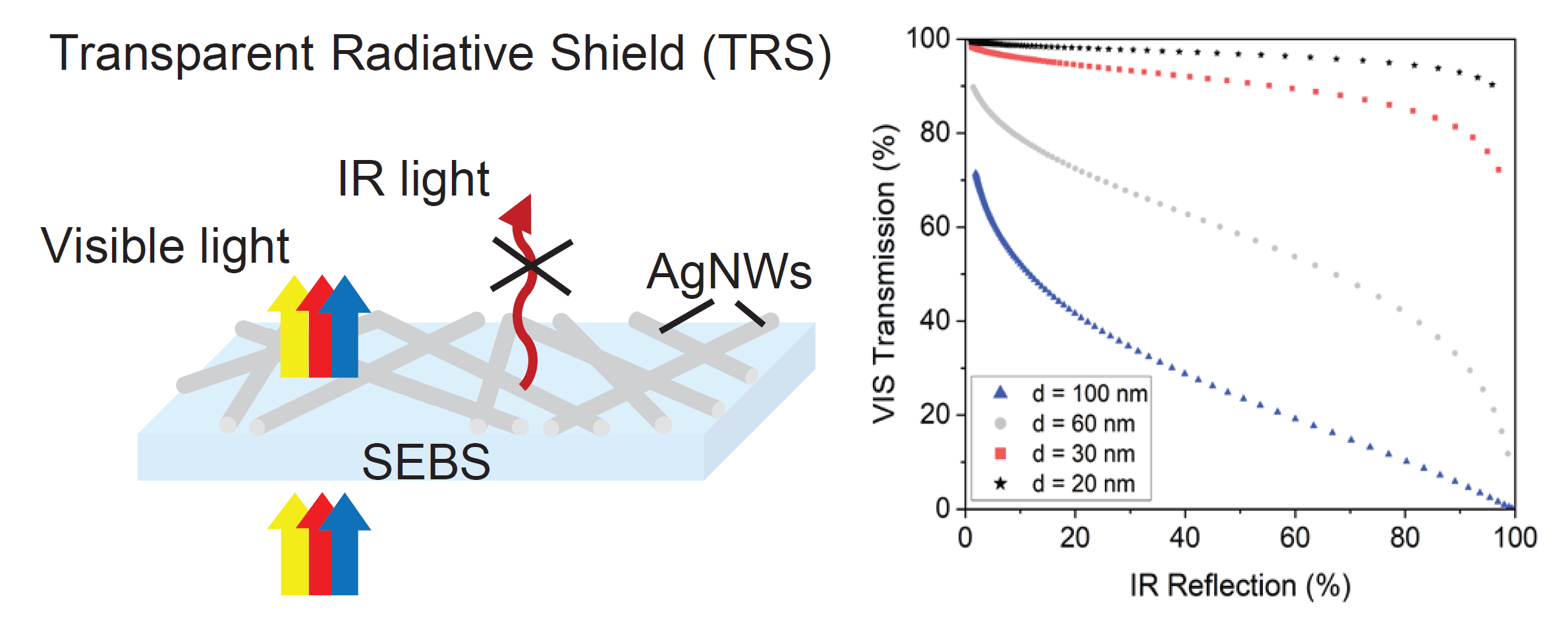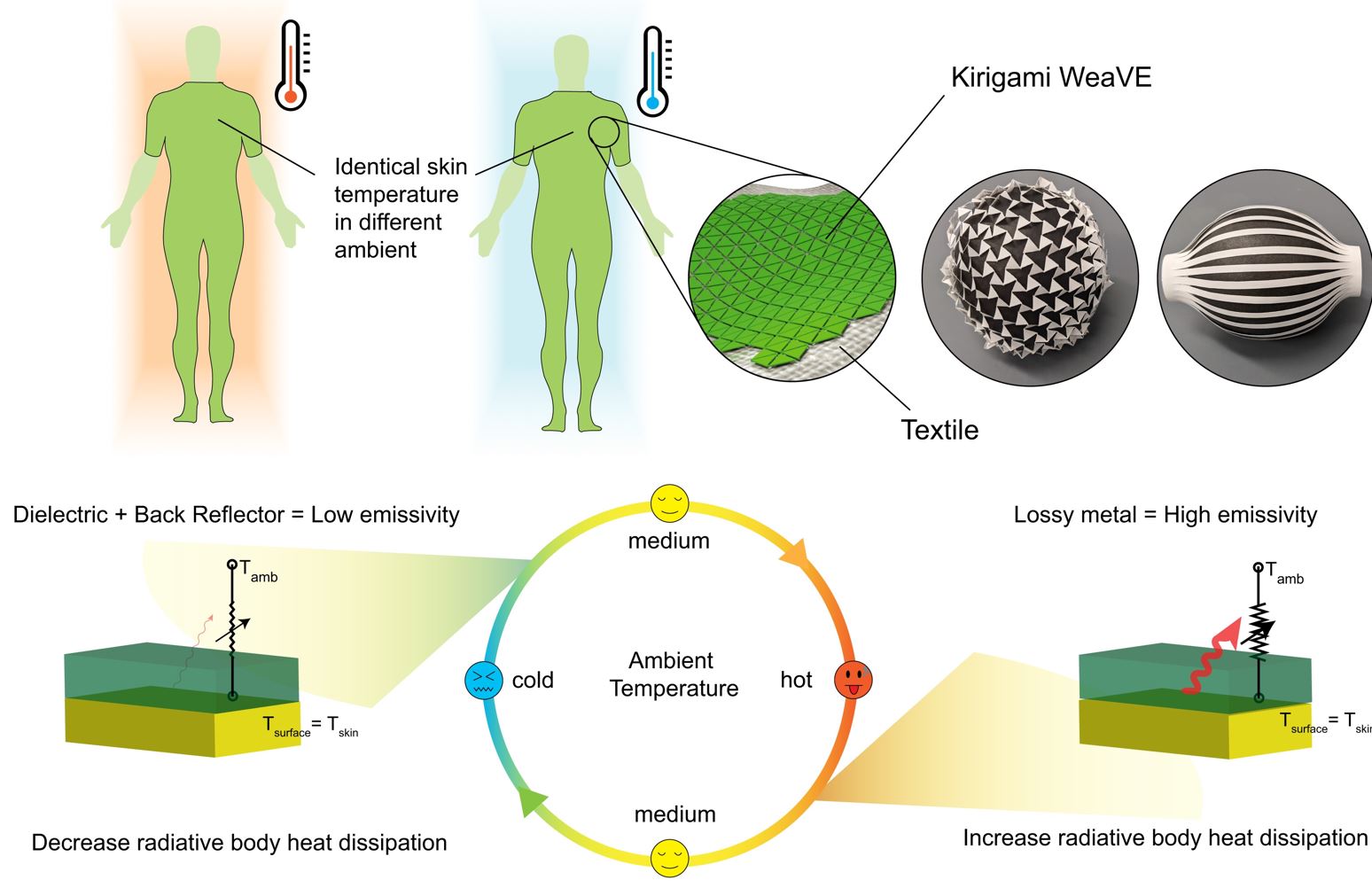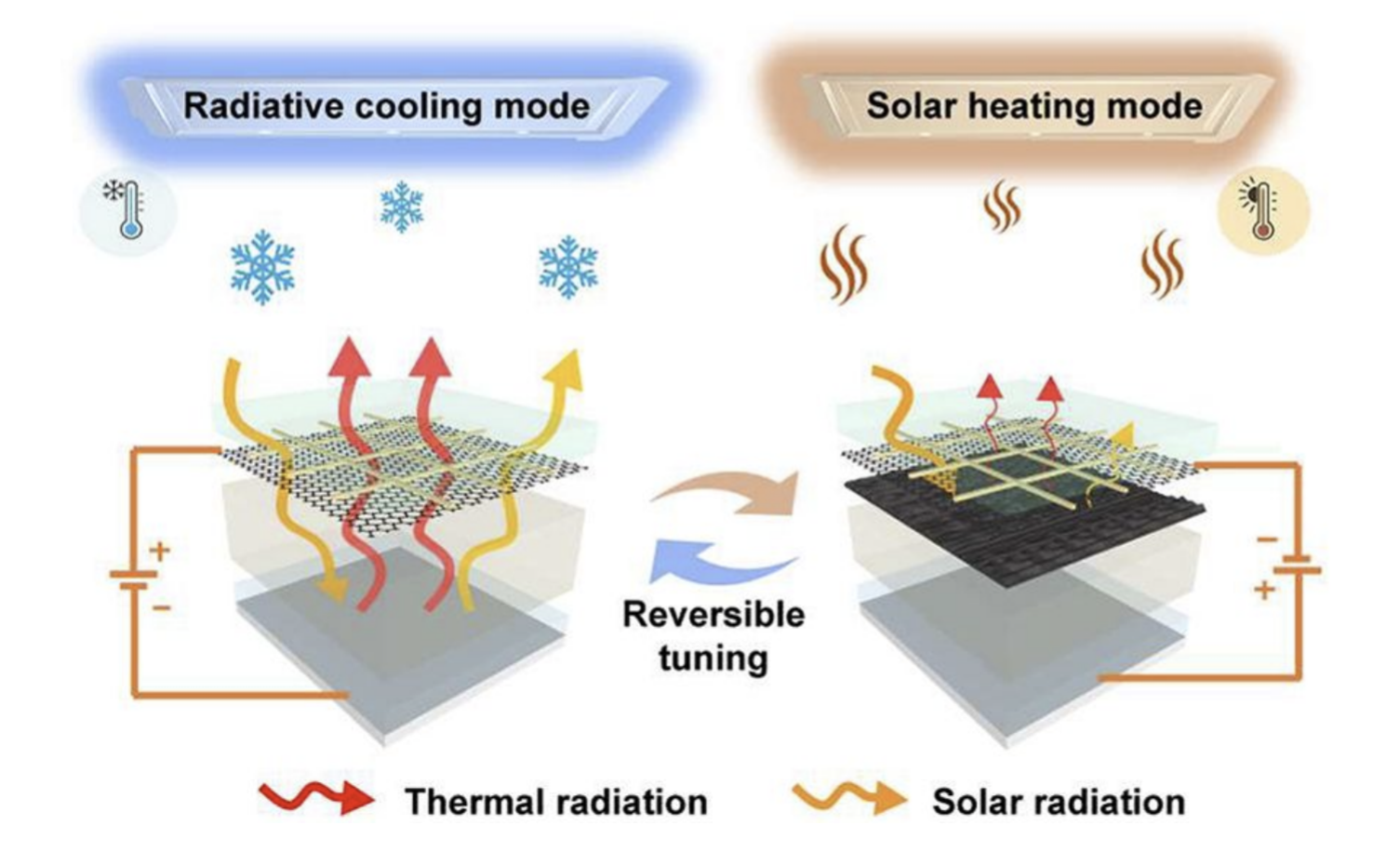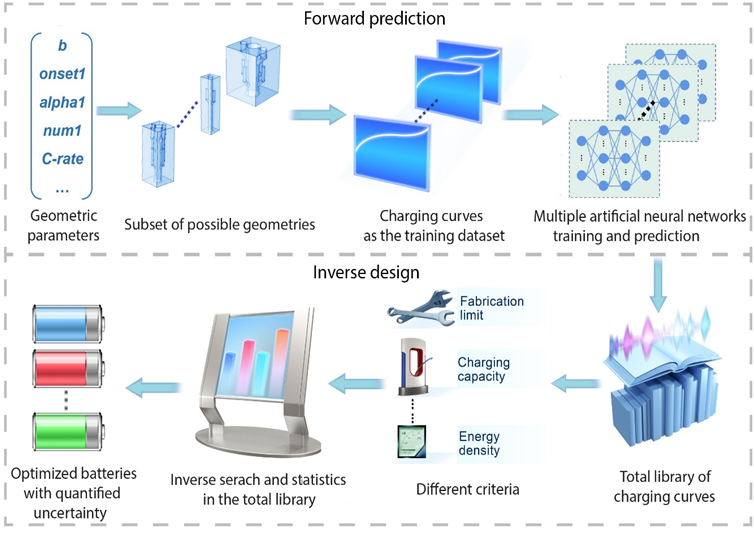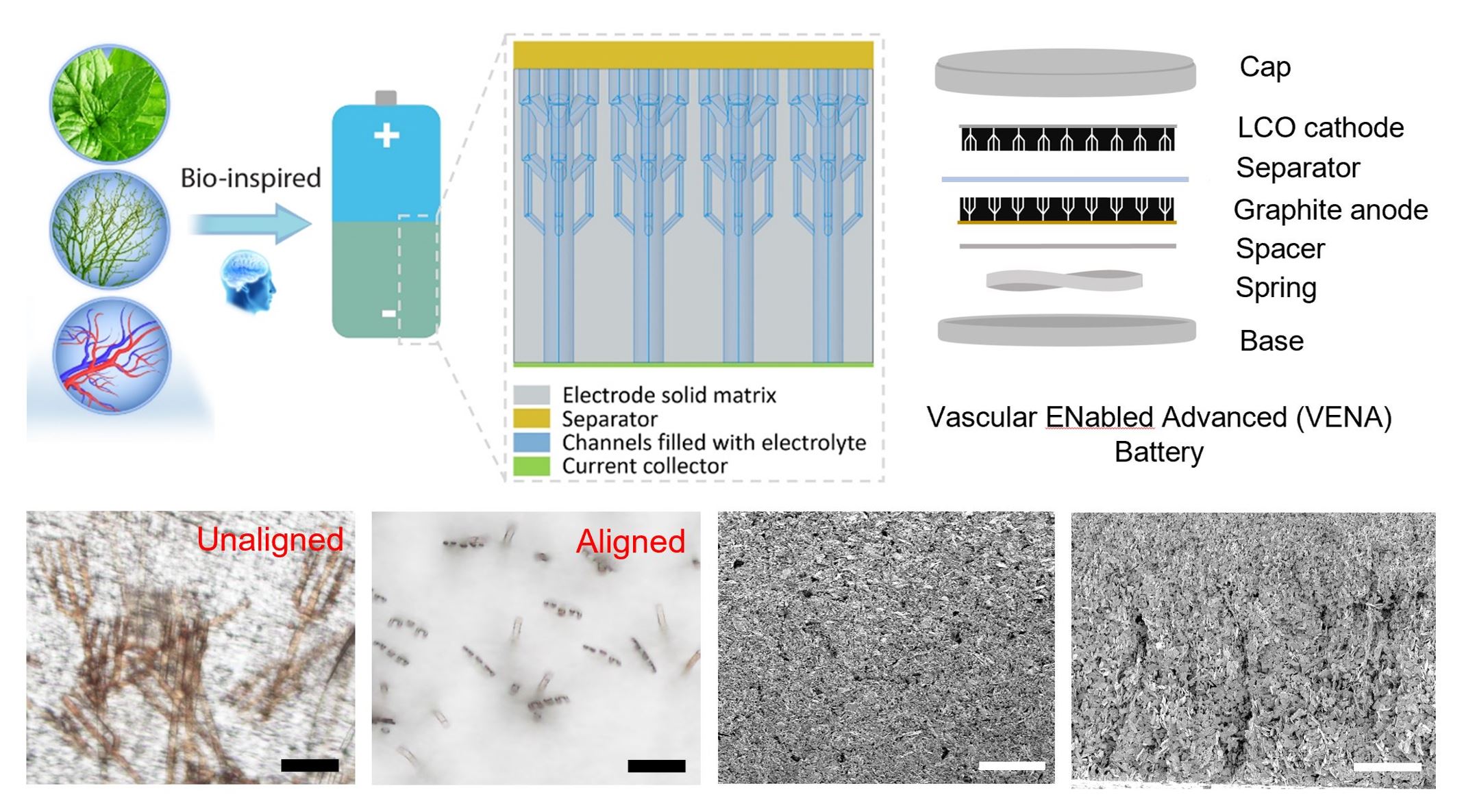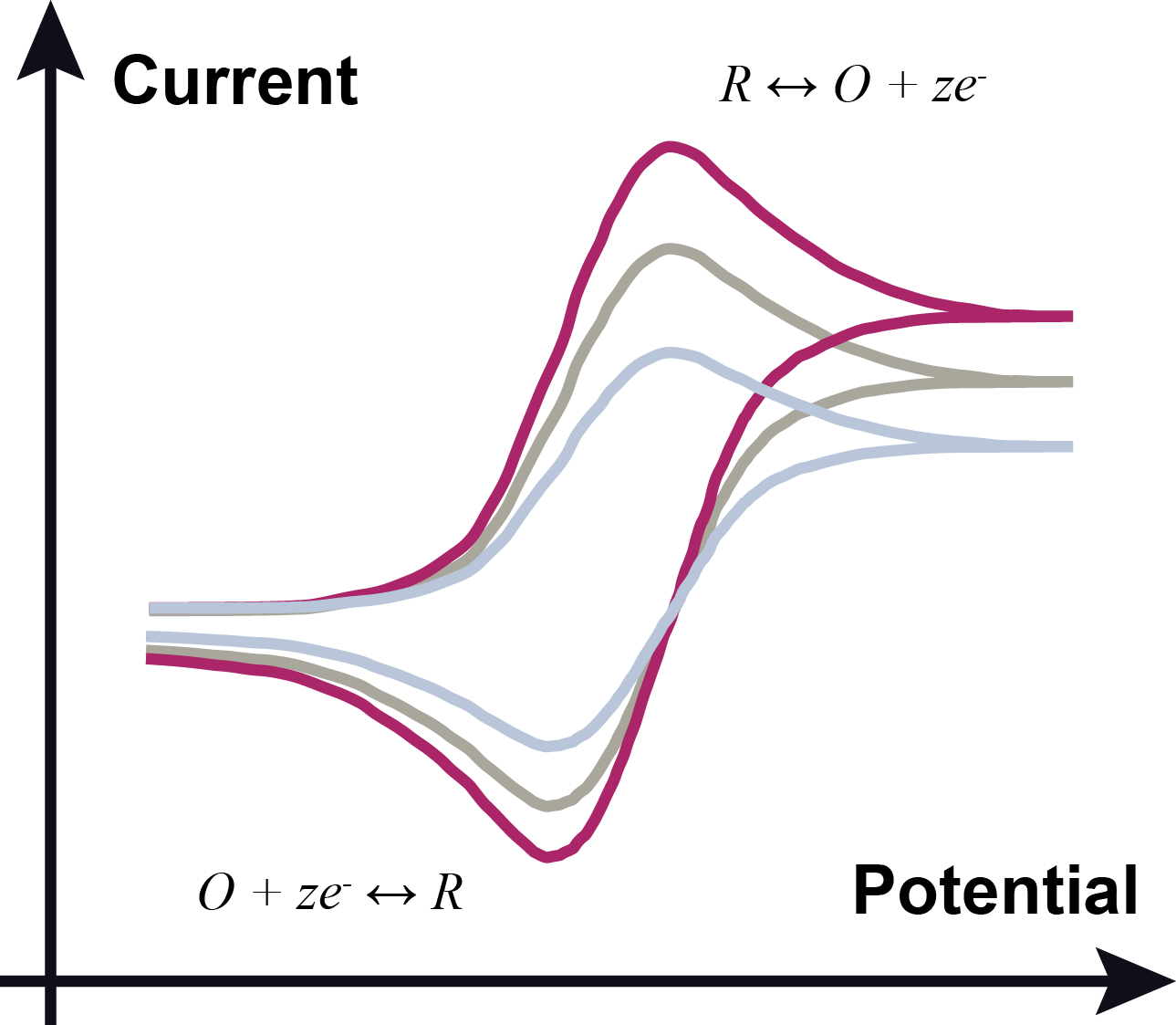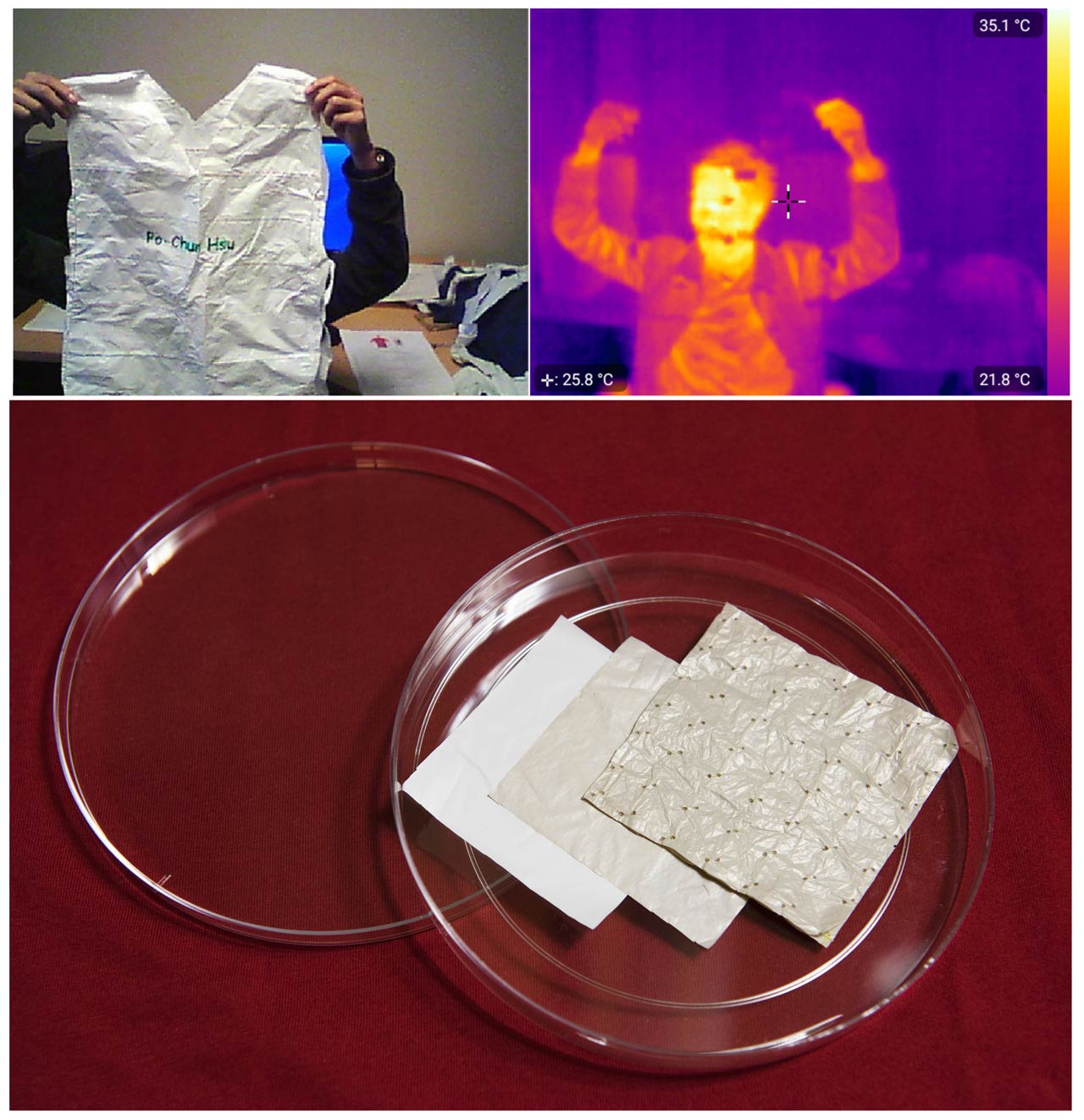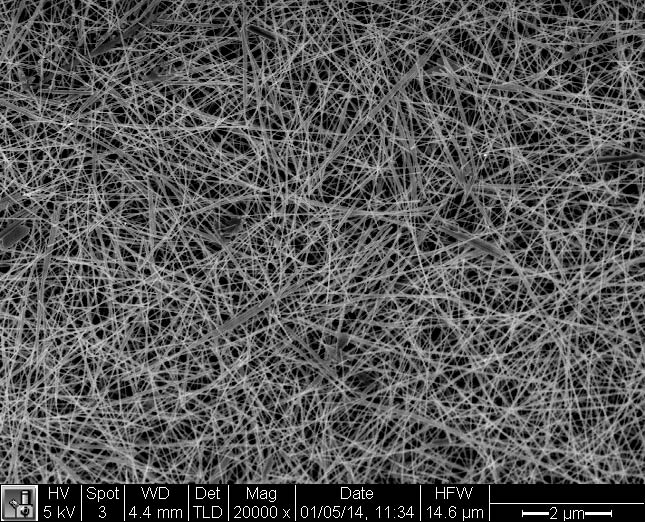Light and heat are two ubiquitous energy forms that are distinct but also closely correlated to each other. As the sunlight emitted from its 5500K surface is extremely useful for us to generate high-grade energy, its radiation is governed by the same physics as our human body thermal radiation at 300K. The fundamental materials science and thermal engineering of light-heat conversions are the keys to achieve better efficiency, higher power density, and other desirable properties for various applications in energy and personal health.
Research projects:
- Electrochemical dynamic metasurfaces for light- and heat-management
- Electrochromic conductive polymers: structure-property study and co-design of photonics and materials science
- Reversible metal electrodeposition: energy storage and plasmonics
- Radiative cooling and heating textiles
- Infrared-active plasmonic nanoparticles
- Carbon capture nanofibers


